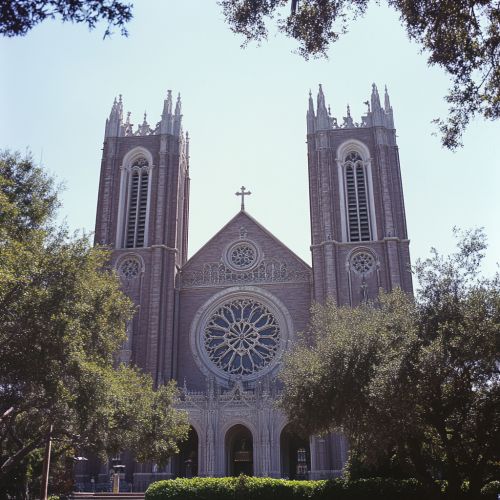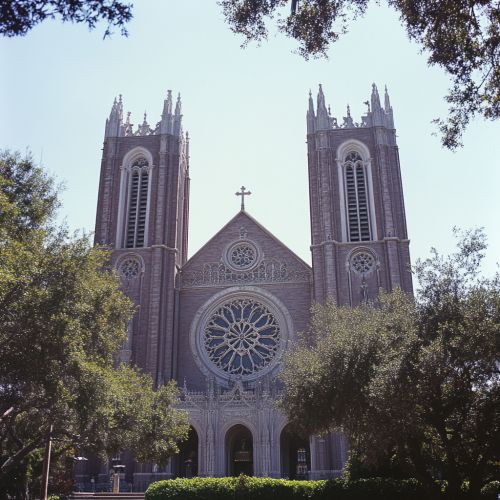S-Hertogenbosch St. Johns Cathedral
History
'S-Hertogenbosch St. John's Cathedral, known in Dutch as "Sint-Janskathedraal," is a prominent Roman Catholic cathedral located in 's-Hertogenbosch, Netherlands. The cathedral is dedicated to Saint John the Evangelist and serves as the seat of the Bishop of 's-Hertogenbosch. The construction of the cathedral began in the 13th century and continued through various phases until its completion in the 16th century.
The original structure was a parish church built in the Romanesque style around 1220. However, as the city of 's-Hertogenbosch grew in importance, there was a need for a larger and more grandiose church. In 1380, construction began on a new Gothic-style church, which would eventually become the current St. John's Cathedral. The transition from Romanesque to Gothic architecture marked a significant evolution in the design and structure of the cathedral.
Architecture
The architecture of St. John's Cathedral is a prime example of Brabantine Gothic style, characterized by its intricate detailing, large windows, and soaring spires. The cathedral's exterior is adorned with numerous sculptures, including gargoyles and statues of saints, which add to its grandeur and complexity.
Exterior
The facade of the cathedral features a large rose window, flanked by two towers that rise to a height of 73 meters. The main entrance is through a richly decorated portal, which is adorned with sculptures depicting scenes from the Bible. The flying buttresses, a hallmark of Gothic architecture, provide structural support to the walls and allow for the inclusion of large stained glass windows.


Interior
The interior of St. John's Cathedral is equally impressive, with a nave that stretches 115 meters in length and a vaulted ceiling that reaches a height of 26 meters. The nave is flanked by aisles and chapels, each adorned with intricate carvings and sculptures. The choir, located at the eastern end of the cathedral, features a magnificent high altar and a series of choir stalls that date back to the 15th century.
The cathedral's stained glass windows are among its most notable features. These windows, which date from the 15th to the 20th centuries, depict scenes from the Bible and the lives of the saints. The windows are renowned for their vibrant colors and intricate designs, which add to the overall beauty and spiritual atmosphere of the cathedral.
Art and Decoration
St. John's Cathedral is home to a wealth of artistic treasures, including paintings, sculptures, and liturgical objects. One of the most famous pieces of art in the cathedral is the "Miraculous Statue of Our Lady of 's-Hertogenbosch," a wooden statue of the Virgin Mary that dates back to the 13th century. This statue is the centerpiece of the annual "Maria Ommegang" procession, which attracts thousands of pilgrims each year.
The cathedral also houses a number of important paintings, including works by renowned Dutch artists such as Jan van Scorel and Abraham Bloemaert. These paintings, which depict religious scenes and figures, are displayed throughout the cathedral and contribute to its rich artistic heritage.
Restoration and Preservation
Over the centuries, St. John's Cathedral has undergone numerous restorations and renovations to preserve its structural integrity and artistic heritage. One of the most significant restoration projects took place in the 19th century, under the direction of architect Pierre Cuypers. This restoration aimed to repair damage caused by weathering and neglect, and to restore the cathedral to its original Gothic splendor.
In recent years, additional restoration efforts have focused on preserving the cathedral's stained glass windows, sculptures, and other artistic elements. These efforts are essential to ensuring that St. John's Cathedral remains a vibrant and inspiring place of worship for future generations.
Cultural and Religious Significance
St. John's Cathedral holds a special place in the cultural and religious life of 's-Hertogenbosch and the wider region. As the seat of the Bishop of 's-Hertogenbosch, the cathedral is the center of the Roman Catholic Diocese of 's-Hertogenbosch and plays a key role in the religious life of the community.
The cathedral is also a popular destination for tourists and pilgrims, who come to admire its architectural beauty and to participate in religious ceremonies. The annual "Maria Ommegang" procession, which honors the "Miraculous Statue of Our Lady of 's-Hertogenbosch," is one of the most important religious events in the city and attracts thousands of participants each year.
